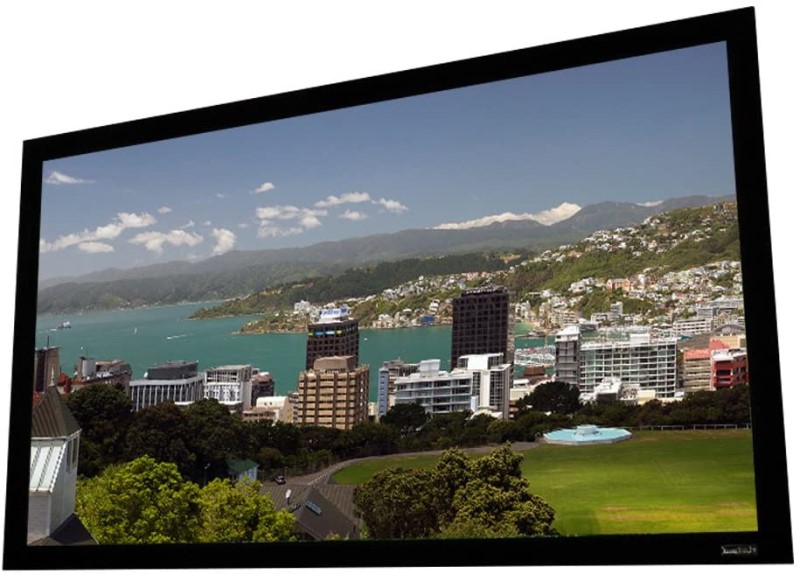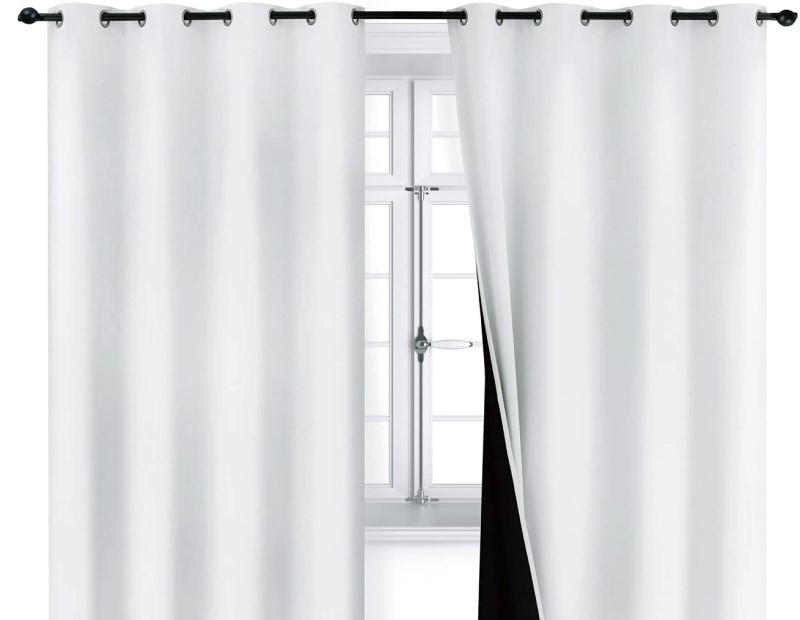Do I Need A Projection Screen?
We get this question a lot from people that are just dipping their toe into the deep end of home theater. Often from college students or others on a tight budget. They’ve bought the projector, they’ve found a speaker set and receiver on sale or used, and they are looking to set everything up. But do they really NEED a projection screen? Couldn’t they just paint the wall white or something? Surely there is a corner to be cut here! First, let’s talk about the options and break down the disadvantages.
Author’s Note: We will be assuming a fixed-frame screen as almost all of the alternatives to traditional projection screens are of the fixed type. Acoustically transparent and drop screens don’t really have alternatives that are equivalent. We will also be comparing the pricing based on a 100′ screen size. While there are many people out there that will tell you to get the biggest screen possible, they are wrong. You need the right size for your seating distance. 100″ diagonal is a fairly common size that works in most rooms. Lastly, we will assume a white screen and not some sort of grey or ALR screen.
If you want to buy a specific type of projection screen, check out our projector screen recommendations by type.
Proper Projection Screen
There was a time not so long ago when finding a projection screen under $500 was impossible at nearly any size or quality. Most were many times that price. It was so much of a niche product, that there was no motivation for larger companies to step in and try and drive costs down. But that’s not the case anymore. Projection screens have come way down in price with offerings making looking for alternatives more trouble than they are worth. But if you are really strapped for cash, we understand.
If you are on the market for a fixed-frame screen, you owe it to yourself to check out the less-expensive options out there. If you are in the states, you’ll want to look at Silver Ticket and Elite Screens (Canadians should take a close look at EluneVision). For a 100″ screen, you can pay less than $200 for a Silver Ticket screen that is fairly easy to put together, has a black border for overshooting, and will give you the cinematic experience you are looking for.
Disadvantages: Cost



Some Sort of White Sheet
If you think about it, a projection screen is just a white sheet in a black frame. You’ve got lots of white bedsheets! Couldn’t you just put one of those up? Yes, you could. But there are some considerations. First, your sheet has to be absolutely smooth. That means lots of ironing or steaming to get it that way. Second, you want a sheet that is as heavy as possible. Any light that passes through the sheet (all bedsheets would fall heavily into this category) is lost. Suddenly, your image looks like there is a light shining on the screen and washing everything out, even in a completely dark room. Lastly, not all whites are actually white.

The biggest problem (and we’ll be bringing this up again and again) with using a projection screen substitute is color-shifting. When you use a non-white screen, it shifts all the colors you project on it. That bedsheet may look white, but it really has a little yellow (ewww) or another color. You project an image on it and you’ll find skin tones look wrong and everything looks a little weird. Sure, you can “fix” it by calibrating your projector to compensate, but if you had the equipment and expertise to do that, you wouldn’t be contemplating hanging a bedsheet on your wall.
What ends up happening is that you live with the sheet you have for a while, then start thinking about getting something better. Something more white, something thicker, something flatter. Next thing you know, you’ve spent 25%-50% of what you would have spent on an actual projection screen. And you haven’t even addressed a black velvet border for overshooting. This starts off as the cheapest option but most end up spending more money than they thought.
If you do go this direction, we’d suggest you look at white blackout curtains. You may have to order a couple of different options to see how they perform. At the very least they should reflect most of the light back at you. If they are at all glossy, you may experience hot-spotting. These are heavy and thick. They’ll be a little hard to attach to the wall, but they should hang flat and aren’t that expensive.
Disadvantages: Color accuracy, brightness, difficult to set up.
Projection Screen Paint
The DIY community loves screen paint for homemade projection screens. This is paint that is specifically designed for the purpose of painting a projection screen on a wall. It has the advantage of being pure white and usually comes in either flat or matte (which is what you want). This means no color shifting and no hot-spotting. There are some issues though.

First, screen paint is pretty much universally expensive. A one quart (not gallon) can will run you around $75. That will get you two coats of a 100″ diagonal screen if you are very good at not wasting paint. And wasting paint will be an issue. Because screen paint is extra thick. This makes applying it much harder. If you are not comfortable with painting, you may find that you’ve spent $75 on a white, bumpy, uneven screen surface. You’ll want a very smooth roller and you need to roll it slowly in one stroke. If you go back over it while it is still wet (or tacky) it will leave a texture. If you end up with a texture, be prepared to spend some time sanding.
While the thickness of the paint sounds like a negative, it is by design. It is because your wall is not as flat as you think it is. The orange peel or whatever texture is on your wall will show through on your image. The thickness of the paint is designed to cover the wall texture. But it is not a panacea. If you have major imperfections or cracks, those will need to be addressed before you apply the paint. If you are a handy sort of person, it may sound like a fun project. Most people break out in cold sweats.
Disadvantages: Not cheap, difficult to do correctly.
Blank Wall for Projection Screen
You’re one of the cool kids that has a modern home with white walls and grey and black everything else. Lucky you! Just pick a wall and pop some corn, right? Well, if you read any of the above, you know that isn’t the case. If you had anything to do with choosing the color of the walls, you know that white is not just white. There are so many whites! Okay, this is starting to sound a little racist so we’re going to move on.

There is no guarantee that your walls won’t color-shift your image no matter how white they look. On top of that, there is the texture to consider. You either have to get rid of it (hello lots of sanding) or fill it in (hello lots of spackle). Either way, it is not as easy as you think it’ll be. If you’ve ever asked for a truly flat ceiling or walls (no texture), you’ve been told that it costs a lot more. Why? Seems like there would be LESS work than adding a texture.
See, the reality is that your walls aren’t as flat or straight as you think. The texture hides all sorts of sins. Once you start trying to get a flat surface, those issues are going to come to the front. You may luck out and have a nice, flat wall to project on. But you might not. Regardless, you’ll be putting in a lot more elbow grease than you think trying to “just” use an existing wall.
On top of all of this, the finish of the paint makes a big difference. Do you have glossy paint? Welcome to the wonderful world of hot-spotting. Even if the paint isn’t color-shifting the image, the finish might be making it all but unwatchable. This means you’ll have to paint a NEW color on that portion of the wall. If you want to save money over the screen paint. you can get regular white paint. You’ll need to do some research to see which color is truly white. Make sure you get flat or matte finish (no glossy). At least it should be easier to apply than the screen paint and should be much, much less expensive.
Disadvantages: Requires a flat surface, lots of elbow grease, likely additional paint.
Conclusion
Projection screens have come way down in price. But for some, the DIY savings are too tempting to resist. While you can save money, it is often at the expense of your time, energy, and the final performance of the screen. After reading our article, you at least know what you are getting yourself into. Do your research and prepare well before purchasing anything. You can end up with a very good result and save some money to boot. Just to expect it to be as easy as hanging a projection screen.


